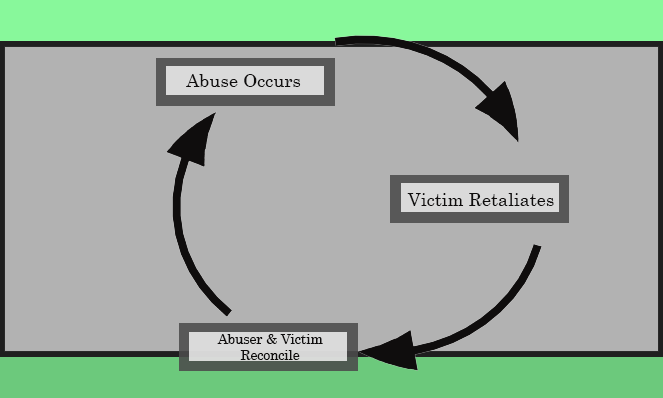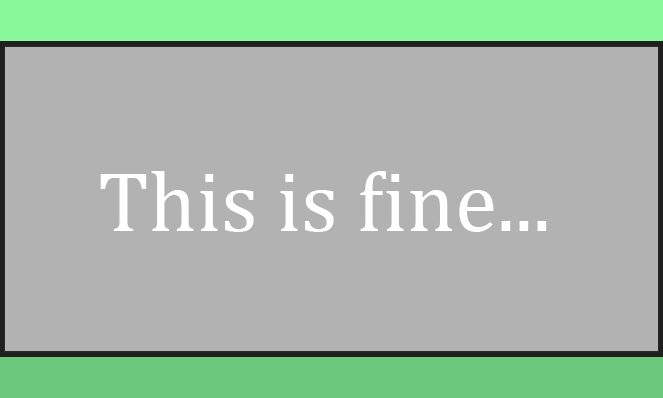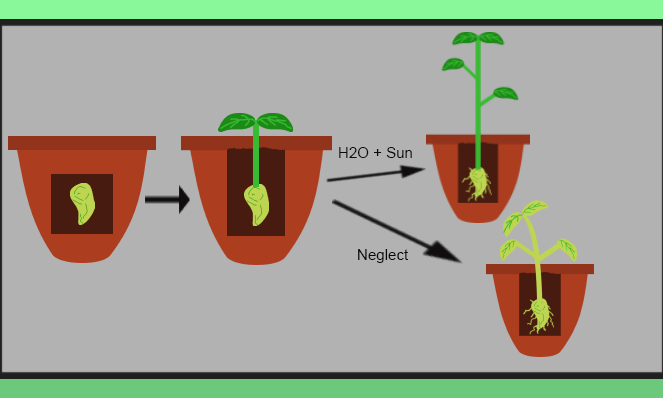
This week on Well-Rounded we look at recognizing psychological abuse, where it occurs and what it looks like, and what it is.
What is Psychological Abuse?
Psychological abuse is defined as the systemic destruction of a person’s self-esteem and/or sense of safety, often occurring in relationships where there are differences in power and control.
This type of abuse is not easily detected as physical abuse. The scars left are internal and show themselves through behaviour.
This type of abuse is prevalent everywhere. From workplaces to schools, to prisons, the military, villages, and homes. Every type of community is susceptible to psychological abuse within its structure system.
Examples of this abuse include:
- threats of harm or abandonment
- humiliation
- deprivation of contact
- isolation
It is important to detect this behaviour within ourselves, as well. In all abusive situations, there are victims and abusers. To simplify concepts discussed further on, the terms victim and abuser will be used to describe one who receives abuse and one who gives abuse, respectively.
One should reflect often on their responses to root out abusive tendencies and try to think of ways to correct your response if a similar situation occurs again.
Other terms that are used interchangeably with psychological abuse are:
- emotional abuse
- verbal abuse
- mental cruelty
- intimate terrorism
- psychological aggression
There are varying degrees of abuse, I find it should only be considered abuse when done intentionally with the goal of breaking someone’s spirit.
In terms of parenting, this may seem very prevalent, as there is a very fine line between discipline and abuse. Especially as social norms change, what may have seemed normal in the past, may be seen as abuse now.
Such behavioural patterns should ideally be recognized within one’s self prior to raising children, or you may unknowingly impart abusive patterns onto your offspring, continuing a most likely long cycle of abuse, referred to as intergenerational transmission of abuse.
Relationships susceptible to psychological abuse are:
- Same-Sex
- Heterosexual
- Adult – Child
- Sibling
- Peer Relationships
- Relationships of Trust & Authority
In other words, any and all relationships are susceptible. If one party is using harmful tactics to exert control or power to diminish another, then it is abuse.
As previously mentioned, this abuse occurs everywhere, self-regulation should be common practice among all community leaders, holders of power, or anyone who is responsible for maintaining a group of people, at the very least, to ensure healthy relationships.
How does it affect us?
This type of mental abuse can manifest differently from person to person. What affects a child may or may not have a similar effect on an adolescent or adult.

| Child (0-12) | Adolescent (13-17) | Adult (18-64) | Elder (65+) |
| •Risk of being bullied •Significant speech delays •Limited peer-interaction •Overt aggression | • Indirect aggression • Suicidal ideation • Socially withdrawn •Abusive-dating relationship | • Shame • Physical issues with no medical basis • Substance abuse • Low self-respect • Risk taking behaviour • Paranoia | • Extreme passivity • Learned helplessness •Dementia-related behaviours • Signs of general psychosis |
Chart displaying signs of abuse in humans aged infant to elderly.
Since the scarring from this abuse is hard to detect, it is often a long time before it is recognized. The psychological damage can be extensive and have long-lasting consequences, which can become worse over time.
This is never helpful to the receiver. Those who carry these scars typically develop difficulty trusting, communicating, and independently functioning in extreme cases.
It is important to develop a radar that can detect potentially impactful behaviours from others, so you can either avoid them or report them to the appropriate person in a work environment.
One of the most damaging effects of this abuse is vicarious victimization, which is an effect observed in bystanders of psychological abuse. Meaning if this happens in a setting with more viewers, like say a large distribution center, it can have far-reaching effects on those exposed to it.
Below is a chart showing the psychological tactics and behaviors of abusive people:
| Neglectful | Deliberate |
| Denying Emotional Responsiveness: •Not providing care at an appropriate time or manner. •Only interacting when necessary or in an uninvolved way. •Ignoring someone’s attempts to interact. | Accusing, blaming, and jealous control: • Telling someone it’s their fault • Blaming a person for everything that goes wrong • Accusations of flirting and cheating • Making the person feel untrustworthy • Checking in on them constantly • Using intimidation to control them • Demanding accountability for every minute away |
| Discounting: •Making the person feel invalid in their feelings and perspective. •Claiming it was a joke | Criticizing behaviour and ridiculing traits: • Consistently finding faults in a person • Causing the person to feel like they can’t do anything right • Unrealistically high standards • Belittling their thoughts, achievements, and ideas • Diminishing the identity, dignity, and self-worth • Mimicking them |
| Ignoring: •Intentionally not acknowledging the presence, value, or contribution of a person. • Acting as though the person is not there | Degrading: •Insulting, name-calling, ridiculing, imitating, or infantilizing •Yelling, publicly humiliating, swearing, or proclaiming someone is stupid. |
| Denying/Forgetting: • Denying the abuse ever happened • Telling the person, they are delusional and to seek treatment. • Not keeping agreements | Harassing: • Repeatedly contacting, watching, or following a person • “keeping tabs” on someone • Sending unwanted gifts |
| Minimizing or Trivializing: • Refusing to recognize the inflicted pain. •Suggesting that no one else is complaining about your complaint. | Terrorizing: • Inducing terror or extreme fear through intimidation or coercion • Threating to place someone in a dangerous environment or doing so. • Threatening to hurt or kill a loved one, destroy possessions, deport them or send them to an institution. |
| Rejecting: • Refusing to recognize someone’s presence, value, or worth. • Telling someone they are useless or inferior. • Devaluing someone’s thoughts and feelings. • Repeatedly holding someone to a different set of rules than everyone else. | Isolating: • Physically restraining and confining a person • Restricting normal contact with others • Limiting freedom and excluding an older adult from personal decisions • Refusing someone access to their own money • Depriving someone of mobility • Using someone as a pawn in a relationship |
Start keeping track of how those around you are treating you, or if you are treating people this way.

It is also important to recognize these traits within ourselves so we do not unknowingly continue the cycle. If you wish to become more balanced or Well-rounded in a way that suits you, this is a good place to start.
It is also important to recognize these traits and patterns in our “friends”, coworkers, and family members, so you can re-evaluate how close you are going to remain to these people or if they need to be removed from your life completely.
Cycles of Abuse
In my experience, it was realized that victims and abusers are often caught in a cyclic dance. It will go something like this:

- Abuse Occurs
- Victim Retaliates
- Abuser “Appeases” Victim
- Cycle repeats
This is called Cycles of Abuse and can be seen in all repetitive psychological abuse scenarios.
It is imperative to develop the ability to recognize this pattern, whether it is happening to you or your coworkers and friends. It is purely beneficial for you to have this skill.
Workplace abuse
It could be the managers using gaslighting to dissuade any type of complaint.

Gaslighting is a technique used to cause the victim to doubt their own thoughts, emotions, and/or memories. In the work setting, it is used in the hopes that a distressed employee will drop a complaint.
Long-term, this repeated treatment causes the victim to lose self-confidence and be filled with self-doubt, scarring them mentally.
This mental scarring may stay with them until they recognize their own behaviour and seek out the root of it. In many cases I’ve seen personally, the victims allow it to persist out of fear of loss of employment or even just to avoid a confrontation due to discomfort. This is actually what most people do, they “keep their head down” in the hopes that the abuse stops.
If the victim stands their ground, the abusive party will most likely attempt to appease the victim to prevent any further action. If the victim forgives and accepts the appeasement, the cycle is set to continue.
It takes the victim standing their ground and bringing the behaviour to the attention of those who are in a position to discipline the abuser.
The main reason why there continue to be abusive people in positions of authority is due to a lack of reports. If victims of this type of workplace abuse actually made consistent reports, then organizations would have better ways to spot these parasites, either having them retrained or replaced.
Significant other/intimate relationships
At home it could be your significant other, making you feel guilty for wanting to engage with your friends, or in anything other than them.

If the victim retaliates, the power dynamic between the two is often the determining factor of who submits to who.
For example, if the victim does not have sole ownership of the home, the abuser may threaten to kick out the victim if they go see their friends.
Anyone subjected to that level of manipulation and abuse would show signs of depression the longer this pattern repeats and eventually, the victim will have a mental/emotional breakdown.
The abuser then afraid to lose control of their victim, will begin to “love bomb” them in an attempt to appease their partner.
This can also be seen as a form of gaslighting since the purpose of this behaviour is to cause the victim to experience self-doubt about how they felt about you previously.
Like in the workplace, if the victim forgives and accepts appeasement, it allows the cycle to continue.
This can also be true for continued neglect; each abuser takes their own approach to how to break someone down.
In this situation, if your partner cannot be reasoned with, it is best to leave that environment altogether. Especially if a child is present, it is best not to expose our children to these patterns so they cannot be passed on.
Friends & Family
Even non-intimate relationships can be abusive. It could be your friend or family member pressuring you into doing something you don’t want to do or even trying to dissuade you from doing something you’ve always wanted to do.
Or threatening to expose a secret you told them in confidence to your larger group of friends or the rest of the family.
Or even doing that anyway, while smiling to your face.

Recognizing fake friends and toxic family members takes all of us time.
Since we are taught from a young age that friends and family can be trusted, it takes time and experience to recognize the difference between a lack of respect for boundaries and actual concern.
Usually, when we are mature enough to remove people like that from our lives, we may find it to be a long-time friend or a family member.
It is usually a painful process to come to the conclusion of cutting someone you cared about out of your life. It all boils down to what you can live with.
In terms of friendships, weigh what they have done against your values, would you have done to them what they did to you under any circumstances? If the answer is no, drop them, they aren’t worth your time or energy, especially if this isn’t the first time you’ve dealt with the behaviour. If you cannot find it in your heart to drop them, then create distance and take the time to reflect on the friendship itself, not allowing external factors to influence your choice.
Family is always going to be more difficult to manage boundaries with since we are used to them the most. Creating distance is all you can do, by not sharing your life with anyone involved in the toxic family circle. Loving them from a distance and/or spending time with them in small doses.
Whether family or friends, these types of people serve as anchors in our lives, and unless there is some sort of dependency on them, you can walk away from these groups, guilt-free.
What can you live with?
Depending on yourself and your situation, the main determining factor is to decide if you can live with the circumstances or not.

This is ultimately determined by a personal level of self-respect, self-sacrifice, and self-preservation. All of which are rooted in self-awareness.
A good way to measure this is to imagine you have a child, dog, or pet you love so much, that they mean the world to you. Would you want anyone at all to treat this beloved thing the way you are being treated? if the answer is a hard no, then you should try to hold yourself to that same standard.
Self-Awareness and Self- Love can help us see what we can live with. The other best way is to experience it firsthand, but why do that when you can take it from people who have been there.
How is this beneficial?
To be able to recognize if you are causing harm, or the one being harmed, is nothing but beneficial.

There are societal costs that can be avoided with increased awareness of what can be considered psychological abuse and potentially harmful to others.
Societal costs include, but are not limited to:
- Intergenerational transmission of abuse
- Delinquency and adolescent maladjustment
- Intervention by health practitioners
These costs alone impact the education, healthcare, and law enforcement sectors, as a side effect. This doesn’t include the impact on those directly exposed or subjected to this treatment. It also does not discuss the effects in workplaces, public areas, or businesses. It touches all aspects of society, it should be taught in our schools and not tolerated in any professional setting.
There is also, of course, the personal cost to yourself and everyone close to you.

Recognizing this as soon as possible is crucial for your personal growth and development. Usually, these types of people and situations, make you feel uncomfortable and drained.
The person who is smiling to your face and talking behind your back, will subconsciously have you feeling anxious or on edge. The toxic dynamic you have been living through will always have you chasing the appeasement of another, and for little to no reward, even if the reward is a common courtesy.
This rinse and repeat feeling of redundancy will creep into your bones if you allow it to persist for prolonged periods. It will be more difficult to break the cycle the longer you are in it.
If you find yourself dealing with anything mentioned above, please seek professional help for guidance.
Do you suspect you may be in a cycle of abuse?
Are you working on it?
or have you already broken free of it?
Let me know in the comments!
Citations
Canada, Public Health Agency of. “Government of Canada.” Canada.ca, / Gouvernement Du Canada, 26 July 2012, www.canada.ca/en/public-health/services/health-promotion/stop-family-violence/prevention-resource-centre/family-violence/psychological-abuse-discussion-paper.html.

0 Comments